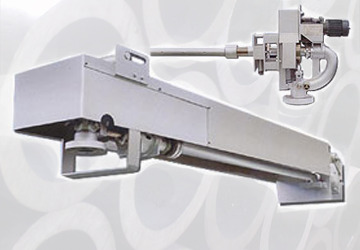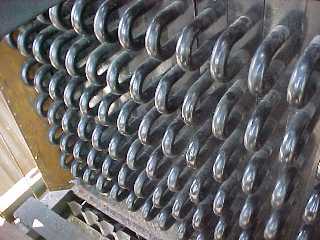
The Ultimate Guide to Sootblower Replacement Parts
Sootblowers are essential components of industrial boilers. Just like the name implies, they can remove soot and ash buildup from a boiler’s heat exchange surfaces.
Home » What Are the Different Types of Boiler Feed Pumps?
In the realm of industrial boilers, the role of a reliable and efficient boiler feed pump is critical for maintaining optimal performance and longevity. These pumps play a vital role in supplying the boiler with water, which assists in generating steam. There are various types of boiler feed pumps, and each is designed to meet specific requirements based on factors such as boiler size, pressure, and application.
Each comes with a wide range of benefits: for starters, boiler feed pumps prevent overheating (and subsequent damage) and extend the boiler’s life. They also decrease overall operation and maintenance cost while boosting efficiency and overall savings. Here are the key types of boiler feed pumps as well as their uses and advantages.
Centrifugal pumps are especially common types of boiler feed pumps, and for good reason. They operate on the principle of imparting kinetic energy to the boiler fluid through rotating an impeller. This kinetic energy converts to potential energy while fluid leaves the impeller and enters the volute casing.
Uses:
Centrifugal boiler feed pumps are versatile and find applications in various industries, including power generation, manufacturing, and refineries.
Advantages:
Multistage centrifugal pumps consist of multiple impeller stages arranged in series. Each stage adds energy to the fluid, resulting in higher pressure. These pumps are well-suited for applications requiring higher pressure than what a single-stage pump can provide.
Uses:
Power plants, large-scale industrial facilities, and applications with elevated pressure requirements benefit from multistage centrifugal boiler feed pumps.
Advantages:
Positive displacement pumps work by trapping a set amount of fluid and directing it into a discharge pipe. This type of pump includes reciprocating and rotary pumps. There are two types: reciprocating boiler feed pump and rotary boiler feed pump.
Reciprocating pumps move fluid using pistons or diaphragms. The back-and-forth motion creates a pulsating flow.
Uses:
Reciprocating boiler feed pumps are used in power generation, petrochemical, and applications requiring precise flow control.
Advantages:
Rotary pumps, like screw pumps and gear pumps, operate by rotating elements to move the fluid. They offer a continuous, non-pulsating flow.
Uses:
Rotary boiler feed pumps are used in food and beverage operations, chemical processing, and other processes in which a continuous flow is crucial.
Advantages:
Turbine pumps utilize the kinetic energy of a rotating impeller to move the fluid. These pumps are often integrated with steam turbines in power plants, taking advantage of excess steam energy.
Uses:
Power plants, especially those using steam turbines, benefit from the integration of turbine boiler feed pumps.
Advantages:
Boiler pumps are indispensable components of industrial boiler systems, as they ensure a reliable supply of water for the generation of steam. The choice of pump type depends on a wide range of factors, including boiler size, pressure requirements, and your specific project needs.
Each type of pump serves a unique purpose in the diverse landscape of boiler feed systems. Centrifugal pumps are simple, multistage centrifugal pumps have high-pressure capabilities, reciprocating pumps offer precision, rotary pumps provide smooth flow, and turbine pumps integrate with steam turbines.
Understanding the characteristics and advantages of each type allows industries to make informed decisions, ensuring the selection of a boiler feed pump that aligns with their specific needs. As technology advances and industry demands evolve, the role of boiler feed pumps continues to be pivotal in maintaining efficient and reliable boiler operations across various sectors.
At Industrial Boilers America, we carry boiler pumps with capabilities to meet all your industrial needs.
Industrial Boilers America offers an array of top-quality boiler feed pumps that can handle all of your industrial needs. As a leading boiler manufacturer with over 20 years of experience, we can help you choose the perfect feed pump for your needs. Contact us to get started.
At Industrial Boilers America, we lead in providing the development, licensing, and deployment of Industrial Power plants. We partner with other leaders of communities and governments to foster long-term relationships that create sustainable energy, jobs, and social responsibility. Our philosophy that sustainability should be rooted in the betterment of the ecosystem rather than profit allows us to provide services that will enable our partners to reinvest in themselves, resulting in a sustainable community.

Sootblowers are essential components of industrial boilers. Just like the name implies, they can remove soot and ash buildup from a boiler’s heat exchange surfaces.

Boilers provide essential heating and steam generation for industries ranging from power production to manufacturing. To ensure safety, efficiency, and functionality, rely heavily on sophisticated

Industrial boilers are essential for keeping the world moving. Understanding the critical industrial boiler parts ensures efficient operation, safety, and longevity of equipment. Main Industrial